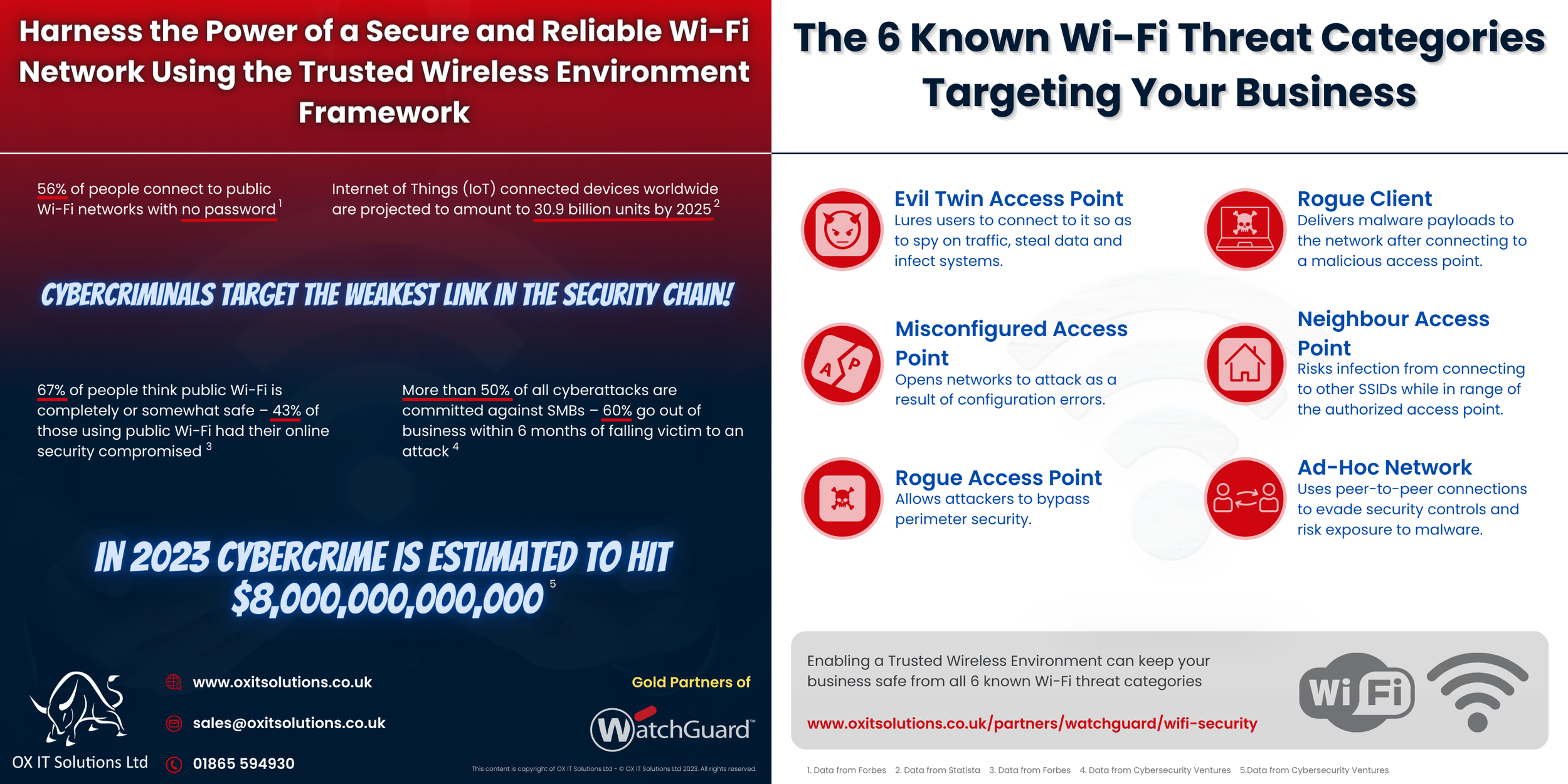6 known Wi-Fi threats targeting businesses
Cybercriminals target the weakest link in the security chain!
Harness the Power of a Secure and Reliable Wi-Fi Network Using the Trusted Wireless Environment Framework
Interesting Statistics related to Wi-Fi Security
56% of people connect to public Wi-Fi networks with no password¹
Internet of Things (IoT) connected devices worldwide are projected to amount to 30.9 billion units by 2025²
67% of people think public Wi-Fi is completely or somewhat safe – 43% of those using public Wi-Fi had their online security compromised³
More than 50% of all cyberattacks are committed against SMBs – 60% go out of business within 6 months of falling victim to an attack⁴
In 2023 Cybercrime Is estimated to hit $8,000,000,000,000⁵
The 6 Known Wi-Fi Threat Categories Targeting Your Business
Evil Twin Access Point
Lures users to connect to it so as to spy on traffic, steal data and infect systems.
Rogue Client
Delivers malware payloads to the network after connecting to a malicious access point.
Misconfigured Access Point
Opens networks to attack as a result of configuration errors.
Neighbour Access Point
Risks infection from connecting to other SSIDs while in range of the authorized access point.
Rogue Access Point
Allows attackers to bypass perimeter security.
Ad-Hoc Network
Uses peer-to-peer connections to evade security controls and risk exposure to malware.
Enabling a Trusted Wireless Environment can keep your business safe from all 6 known Wi-Fi threat categories
www.oxitsolutions.co.uk/partners/watchguard/wifi-security
To receive all our latest updates follow us on LinkedIn, Facebook and Twitter.
Data from Forbes
Data from Statista
Data from Forbes
Data from Cybersecurity Ventures
Data from Cybersecurity Ventures

